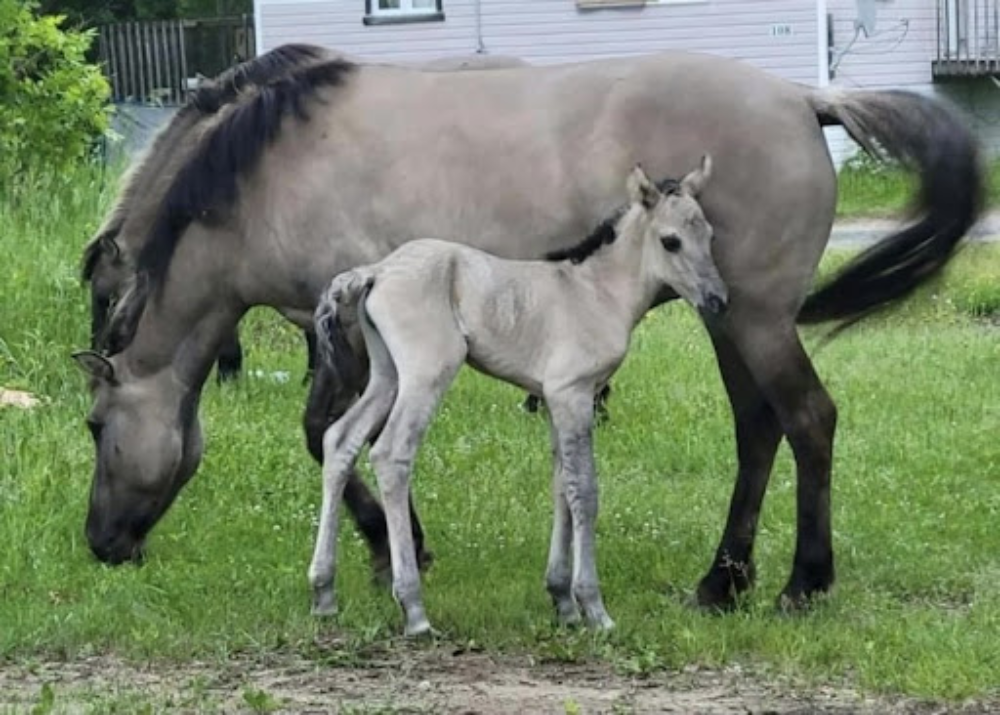The Lac La Croix Indian Pony, often referred to as the Ojibwe Pony, is a small yet hardy breed with a rich cultural heritage and deep historical roots in the Indigenous communities of North America, particularly the Ojibwe people. This breed, which once faced the brink of extinction, is now a living testament to resilience, both in terms of its survival and the cultural revival efforts of the Indigenous peoples who have cherished and preserved it.
Historical Background of the Lac La Croix Indian Pony
The Lac La Croix Indian Pony has been an integral part of the Ojibwe culture for centuries. Historically, these ponies were indispensable for their versatility and adaptability. People used them for transportation, hunting, and various forms of labor. The Ojibwe people, who inhabited the regions around the Great Lakes and into parts of Canada, relied heavily on these ponies for their daily needs, including travel, trade, and agricultural tasks.
The breed has descended from horses brought to North America by European settlers, which then intermingled with Native American horses. Over generations, the Ojibwe people selectively bred these ponies to enhance their hardiness and adaptability to the harsh northern climates and rugged terrains.
Characteristics and Physical Traits
The Lac La Croix Indian Pony is popular for its small stature, standing about 12 to 14 hands high (48 to 56 inches at the shoulder). Despite their size, they are remarkably strong and durable. They have a sturdy build with a broad chest, well-muscled hindquarters, and strong legs, making them suitable for a variety of tasks.
These ponies have a dense, thick coat that provides protection against cold weather, a trait developed through natural selection in their native environments. Their manes and tails are long and full, further aiding in their protection against the elements. They come in various colors, including bay, black, chestnut, and dun, often with primitive markings such as dorsal stripes and zebra-like leg stripes, which are remnants of their ancient lineage.

Cultural Significance of Lac La Croix Indian Pony
To the Ojibwe people, the Lac La Croix Indian Pony is more than just an animal; it is a symbol of their cultural heritage and spiritual beliefs. These ponies are woven into the fabric of Ojibwe mythology and tradition. They are spirit animals and are we often associate them with stories of bravery, resilience, and survival.
The ponies played a crucial role in traditional Ojibwe ceremonies and were considered sacred beings. Their presence was thought to bring strength and guidance to the people, and they were often involved in rituals that connected the community to the land and their ancestors.
The Decline and Revival
The Pony faced a significant decline in the 20th century due to a combination of factors including displacement of Indigenous peoples, loss of habitat, and crossbreeding with other horse breeds. By the mid-20th century, the breed was nearly extinct, with only a few individuals remaining.
The revival of the Pony began in earnest in the late 20th and early 21st centuries, driven by dedicated efforts from Indigenous communities and conservationists. Recognizing the ponies’ cultural and historical importance, these groups initiated breeding programs aimed at preserving the genetic purity and promoting the survival of the breed.
One of the pivotal moments in the revival efforts was the establishment of the Lac La Croix Indian Pony Society, which works to protect and promote the breed. This organization has played a critical role in raising awareness, securing funding, and coordinating breeding programs to increase the population of these ponies.
Modern-Day Significance
Today, the Lac La Croix Indian Pony is celebrated not only for its historical and cultural significance but also for its contribution to biodiversity and ecological sustainability. People use these ponies in various community programs aimed at educating younger generations about Indigenous traditions, horsemanship, and environmental stewardship.
The breed also has found a place in therapeutic settings, helping individuals with physical and emotional challenges through equine-assisted therapy. Their gentle nature and strong connection to human handlers make them ideal companions in these therapeutic contexts.
Conclusion
The Lac La Croix Indian Pony stands as a living symbol of cultural resilience and environmental adaptation. Its survival and continued presence underscore the enduring bond between the Ojibwe people and their natural heritage. Efforts to preserve and promote the breed serve not only to protect a unique genetic lineage but also to honor and revitalize the rich cultural traditions of the Ojibwe community.
As we look to the future, the Lac La Croix Indian Pony will undoubtedly continue to inspire and educate, reminding us of the profound connections between humans, animals, and the land they share. Through ongoing conservation efforts, this remarkable breed will remain a vibrant part of North America’s cultural and natural landscape.









